A dog with a tan point pattern has a solid base color with white, yellow or red markings on the muzzle, eyebrows, chest, underside, lower legs, and under the tail. Although this pattern is also called black back or black-and-tan the base color can also be liver, blue, or lilac.
What is a Black Back Pattern?
Dogs with a black & tan phenotype have symmetrical tan markings and a solid dark dorsal coat.
The lighter ventral markings are found on the cheeks, eyebrows, throat, chest, belly, lower legs, and under the tail. They can be cream, yellow, or red and show countershading.
The small markings above the eyes are sometimes called pips.

Interestingly, dogs with a saddle pattern will also be born with a traditional tan point phenotype. That is because ASIP, the thingy that triggers yellow pigment, is produced with some delay after birth.
Most of us know a tan point phenotype simply as black-and-tan. But since the newer term black back is used by some testing companies, we should probably also get used to it.
The ASIPBB allele (at)
The A locus (ASIP) controls pigment distribution of phaeomelanin and eumelanin.
To have tan points, a dog has to be able to express ASIP.
A tan point dog can’t be dominant black (KB/-) at the K locus nor recessive red (e/e) at the E locus.
Tan points were one of the phenotypes the old A locus testing system could detect: Ay (sable) > aw (agouti) > at (tan point) >a (recessive black). But the old A locus test could neither detect all the versions of at nor could it tell apart traditional tan points from a saddle pattern (both tested as at).
A newly developed test can now distinguish between the different patterns:
| ASIPDY | Ay | Dominant Yellow, Clear Sable |
| ASIPSY | Ays | Shaded Yellow, Shaded Sable |
| aws | Saddle Agouti | |
| ASIPAG | aw | Agouti, Wolf Grey |
| ASIPBS | asa | Black Saddle |
| ASIPBB | at | Black Back, Tan Point |
| ASIPa | a | Recessive Black |
Black back (ASIPBB or at) is the second-most recessive trait at the A locus. Dogs that carry recessive black (at/a) will often display smaller tan markings compared to homozygous at/at dogs.
The “black back” pattern is caused by a particular combination of two ASIP promoters:
The wild-type ventral promoter (VP2) gives traditional tan markings. And the loss-of-function hair cycle promoters (HCP3, HCP4, or HCP5) disable yellow banding on the dog’s back, so the coat stays black.
Any combination of a wild-type ventral promoter and a non-functional hair cycle promoter (VP2-HCP3, VP2-HCP4, VP2-HCP4) represents an at allele. Other promoter combinations (we call these haplotypes) represent the other alleles of the A locus series.
| Phenotype | Allele | VP | HCP |
| Dominant Yellow | Ay | VP1 | HCP1 |
| Shaded Yellow | Ays | VP2 | HCP1 |
| Agouti Saddle | aws | VP1 | HCP2 |
| Agouti | aw | VP2 | HCP2 |
| Black Saddle | asa | VP1 | HCP4 |
| Black Back | at | VP2 | HCP3,4,5 |
| Recessive Black | a | (VP2) | (HCP3) |
Black Back Patterns
Dogs with a tan point pattern have a dark base color with lighter markings on the cheeks, eyebrows, chest, underside, lower legs, and under the tail. They have very specific face markings that include a dark ridge running down the nose which I call a nose bar.
The size of tan markings can be smaller in recessive black carriers (at/a). And markings can be slightly bigger in some dogs that are recessive red carriers (E/e) or domino carriers (E/eA, E/eG).
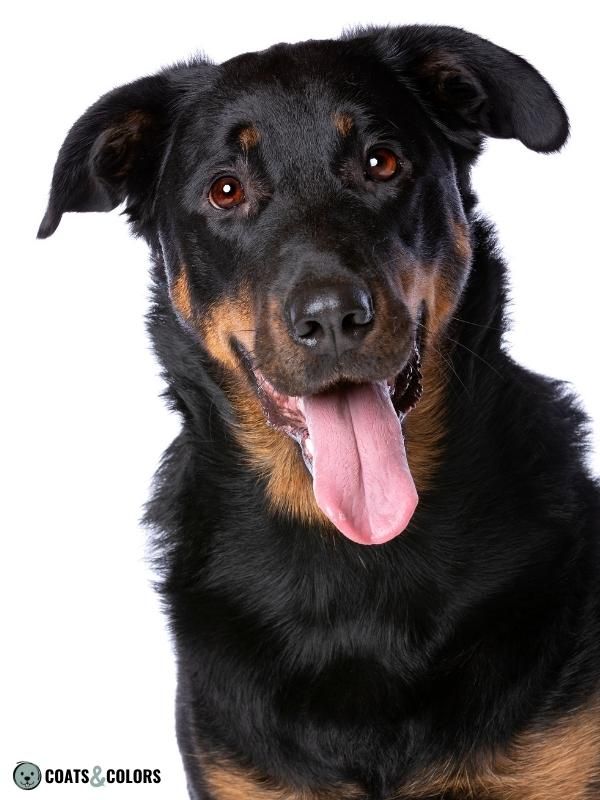
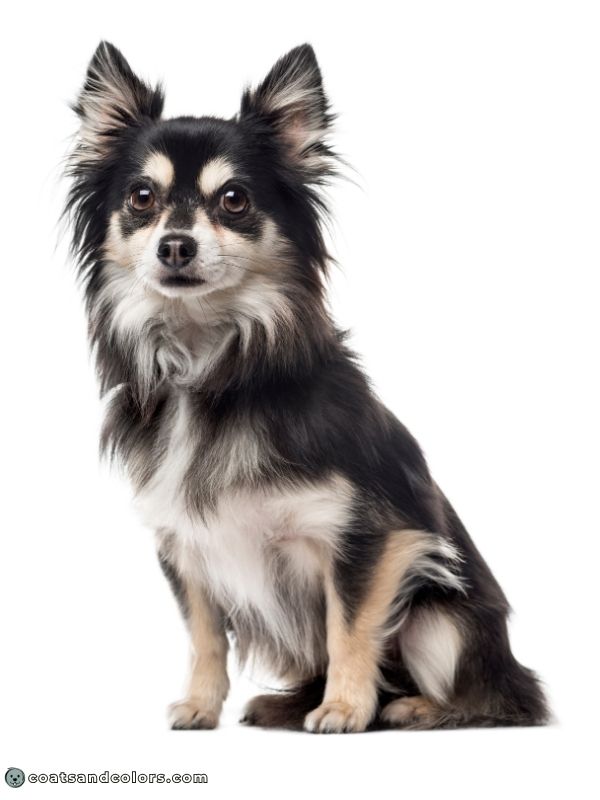
Dogs can have “running tan” where the black around the eyes recedes without being creeping tan. Some dogs with a black and tan pattern even have tan spectacles or are somewhat open-faced.
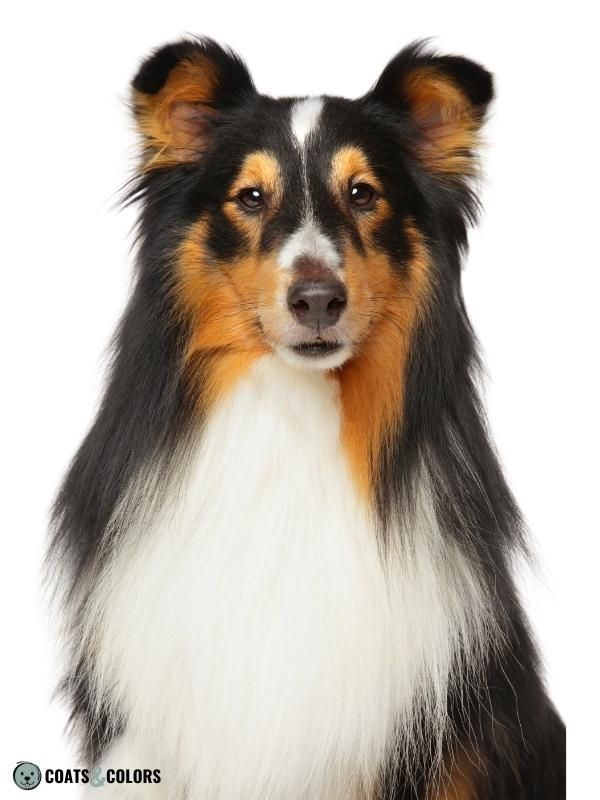
Tan markings can have very crisp edges, but in some cases they can also be smudgy. Some dogs have sooty points or black marks in their tan, especially on the toes (called penciling or thumbmark).

Additionally, there are many traits that can modify how a black-and-tan dog will actually look.
Let’s go through some examples:
Phaeomelanin Intensity
The lighter markings in a black back pattern are pigmented by phaeomelanin. Some traits can affect the color intensity, causing a range from solid off-white to cream, yellow, orange, or red.
Black-and-silver Miniature Schnauzers are an example of very light phaeomelanin intensity while most dog breeds express yellow to red tan points.
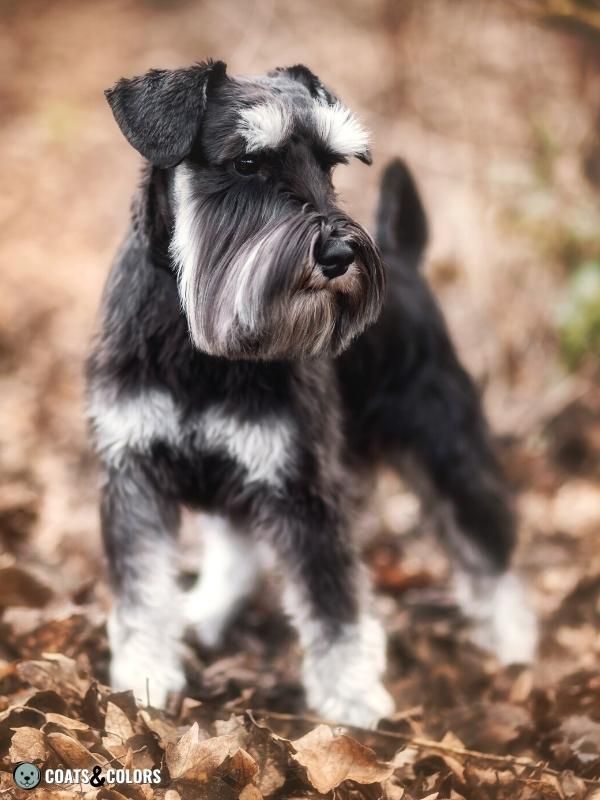
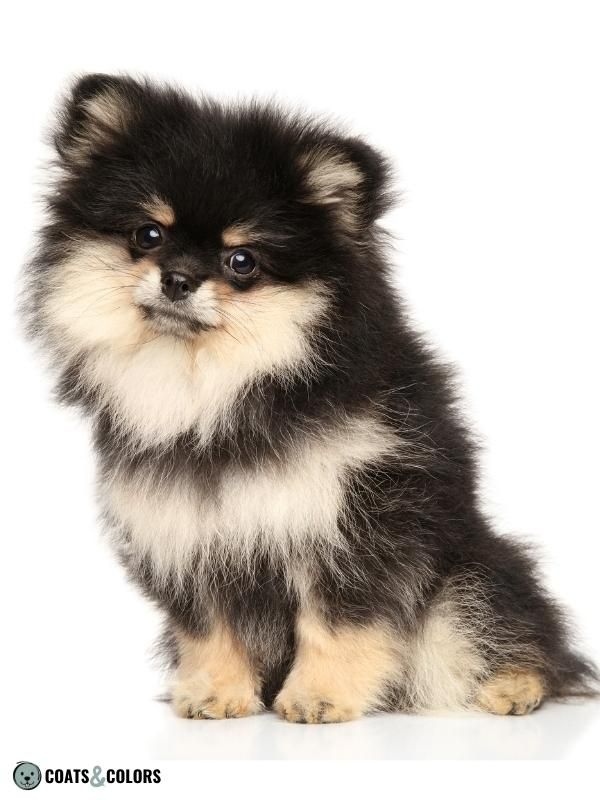
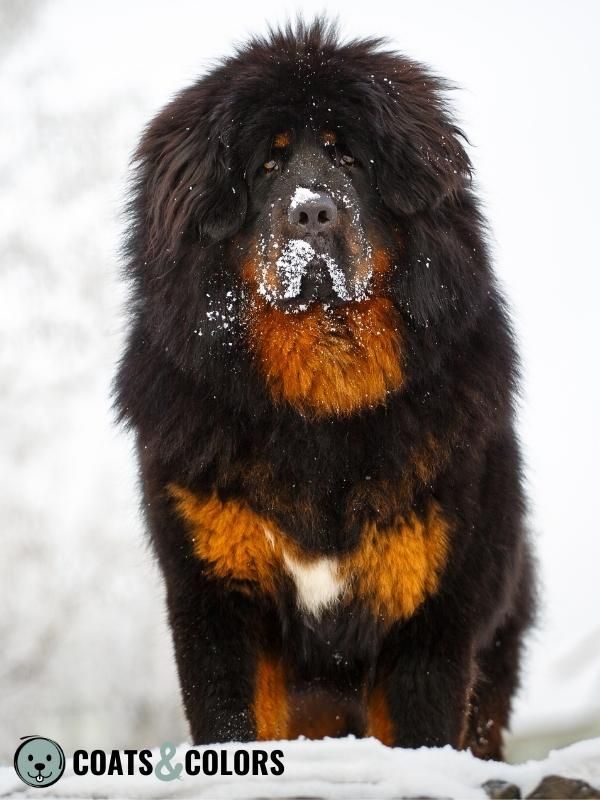
Tan Point Countershading
In some dogs, phaeomelanin is darker on a dog’s back than on his belly, throat or muzzle. This is called countershading (or urajiro in some Japanese breeds).
Countershading can cause very light areas with very defined edges. Since countershading only affects phaeomelanin, it can create an interesting color transition inside the tan markings.

Eumelanin Color
Although this pattern is commonly called black & tan, the eumelanin base color can be black, liver, blue, or lilac. What color a dog’s eumelanin has depends on its genotype at the B locus and D locus.
So some dogs with tan points are not black-and-tan but blue-and-tan or liver-and-tan while lilac-and-tan is quite rare and mostly found in color-bred dogs.
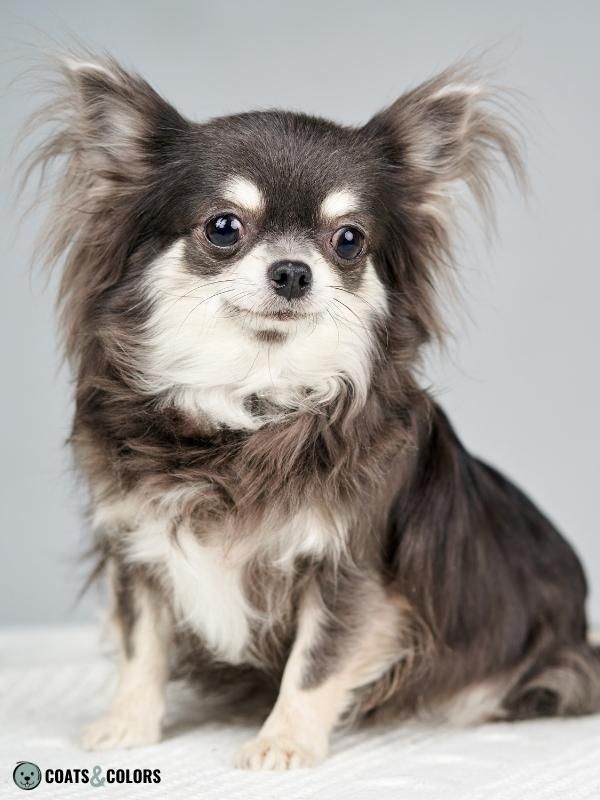
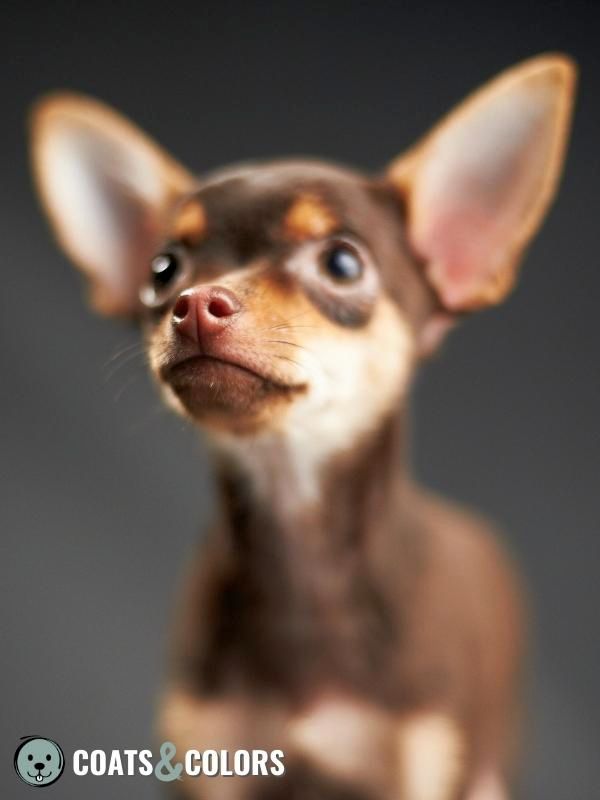
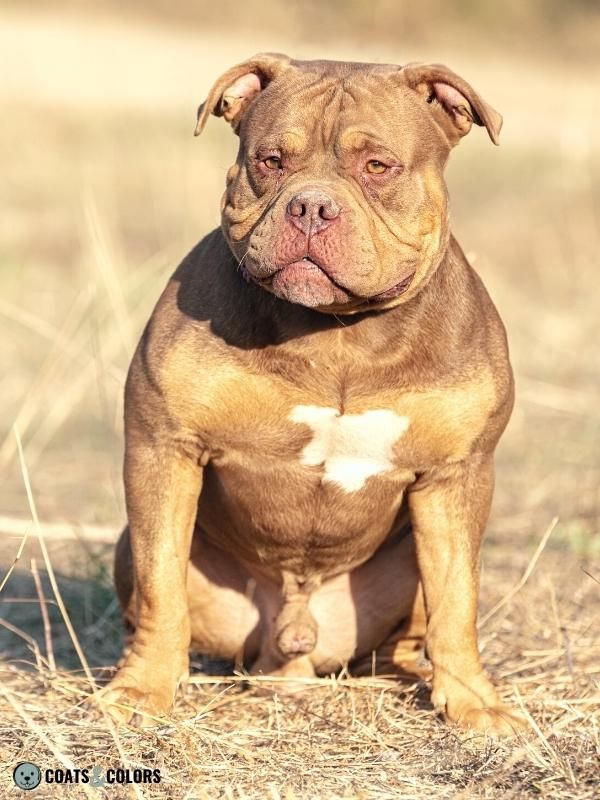
Brindle Point
If a dog has a brindle variant at the K locus (kbr/-), it will express vertical eumelanin stripes on top of all phaeomelanin in their pattern. A brindled tan point phenotype is also called brindle point.
A black & tan dog with brindle will produce black stripes on all of its tan markings.
A blue-based dog will have blue stripes and so on.
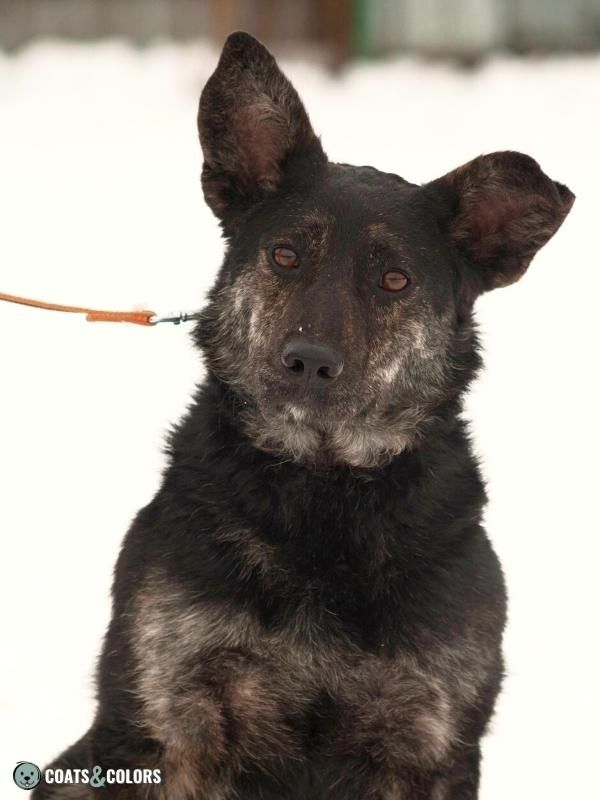

Tan Point & Mask
Masks (Em/-) cause additional eumelanin on a dog’s muzzle. Some masks can extend beyond the face and cause even more eumelanin on the the ventral body.
On top of a tan point pattern, masks can cover some of the tan markings on the face and, in more extreme cases, even on the chest or the lower legs.
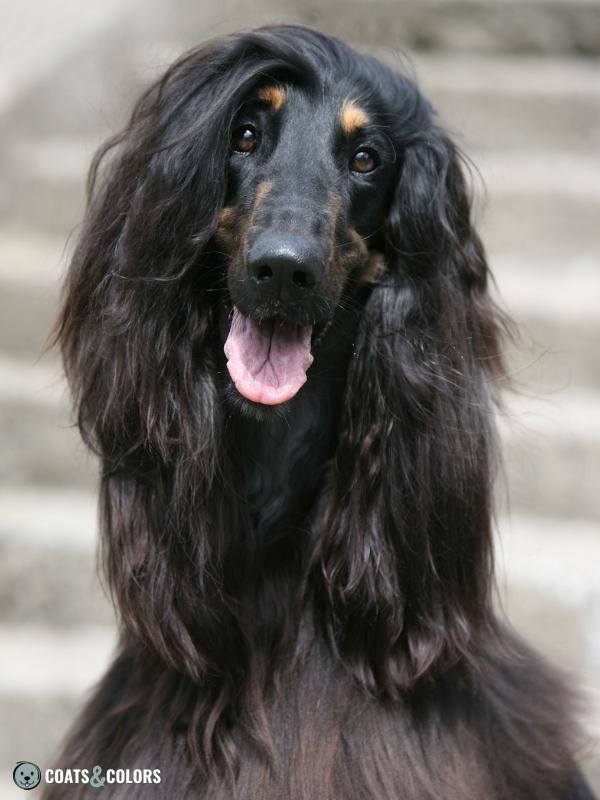
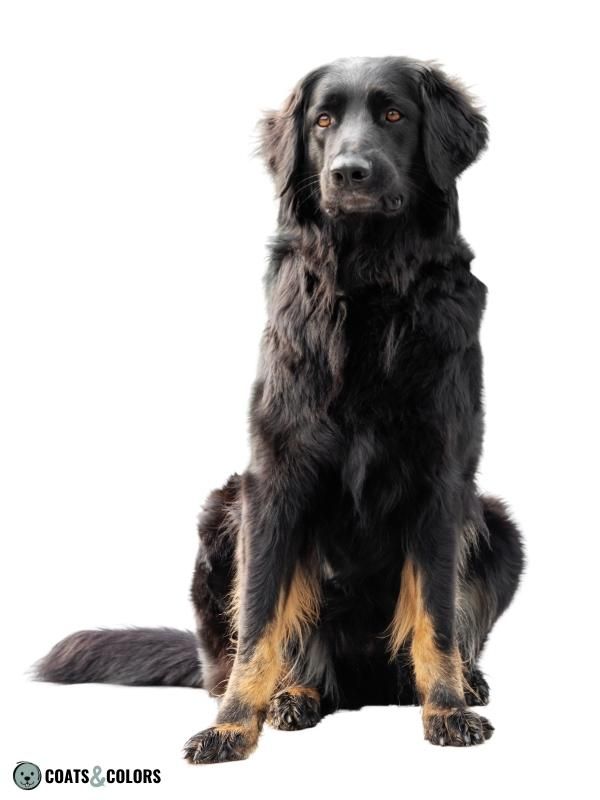
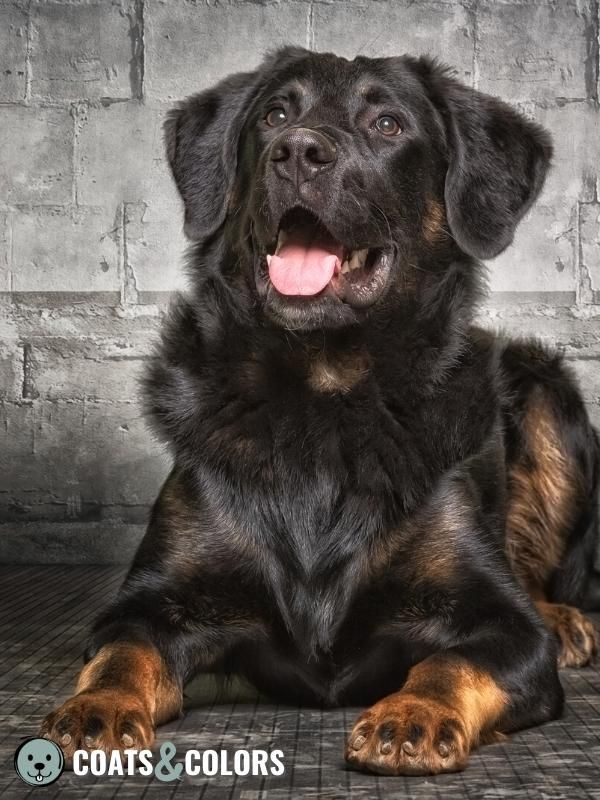
Tan Point & White
A dog with tan points and white is commonly called tricolor since it has “three colors” (black-and-tan-and-white). White erases some of the original base pattern.
Depending on its eumelanin color, different phenotypes are called black tri, chocolate tri, blue tri, or lilac tri. Examples for dogs with a tricolored coat can be found in many dog breeds like Australian Shepherds, Bull Terriers, Bernese Mountain Dogs, and Shelties, Border Collies, or Collies.

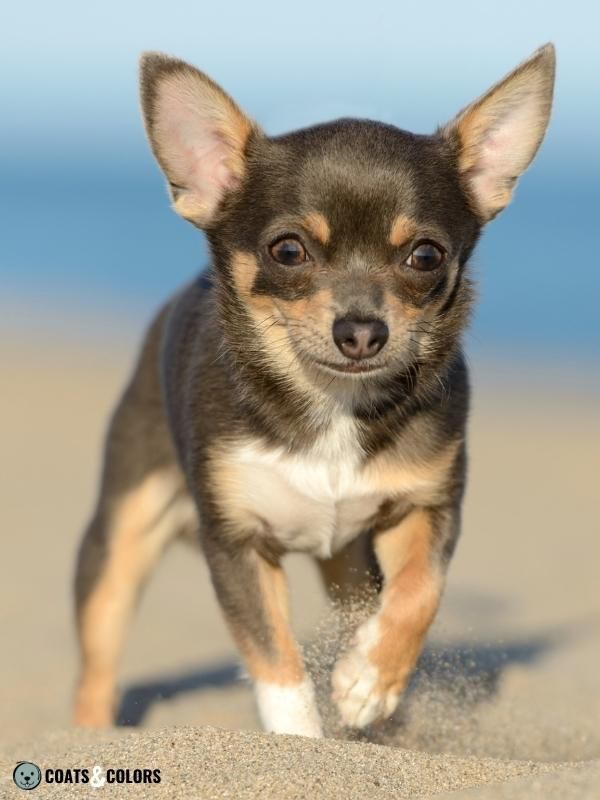
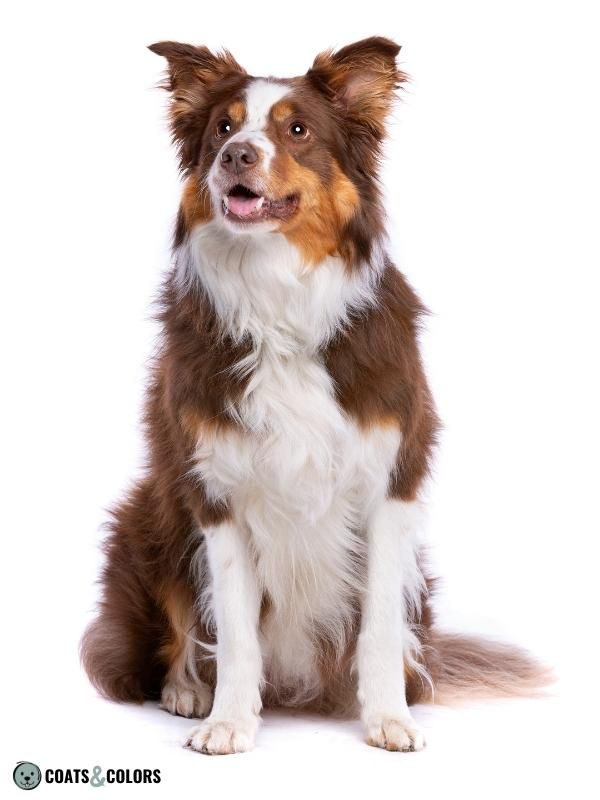
Tan Point & Ticking
On some tricolor dogs, the white markings show dots of the pattern that got erased.
The pigmented spots that appear inside of white markings will always follow the color placement of the hidden pattern. So, on black-and-tan dogs, dots will be black or tan depending on their location.
Ticked black and tan dogs are very common in Cocker Spaniels, English Setters, or Australian Cattle Dogs. Most breeds call heavy black ticking “blue” (e.g. Blue Heeler, Bluetick Coonhound, etc.).
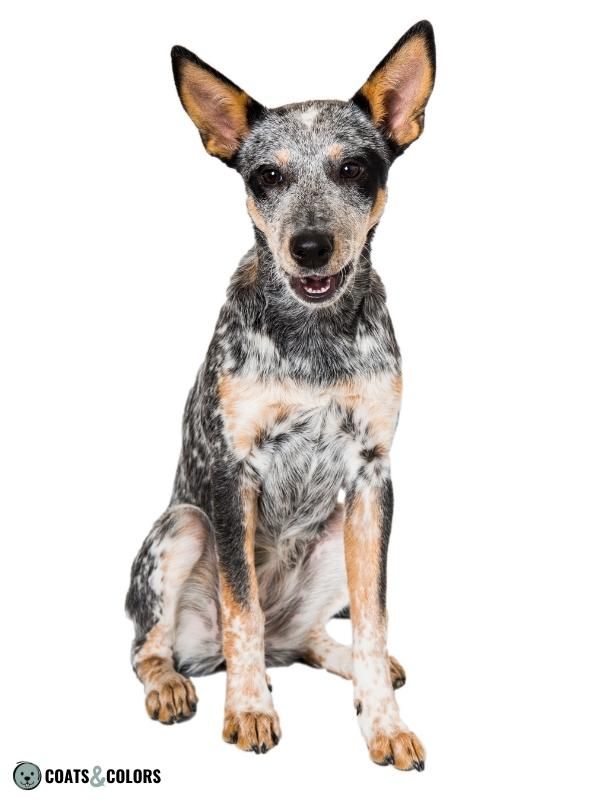
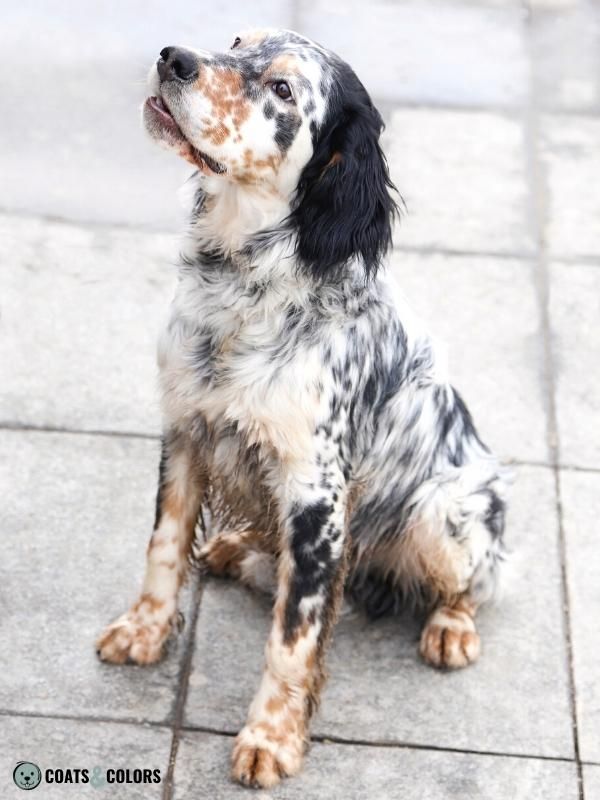
Tan Point & Graying
Progressive greying causes a dog’s eumelanin color to fade. This turns black to gray and brown to beige.
This trait can only affect dogs with furnishings such as Poodles or Tibetan Terriers.
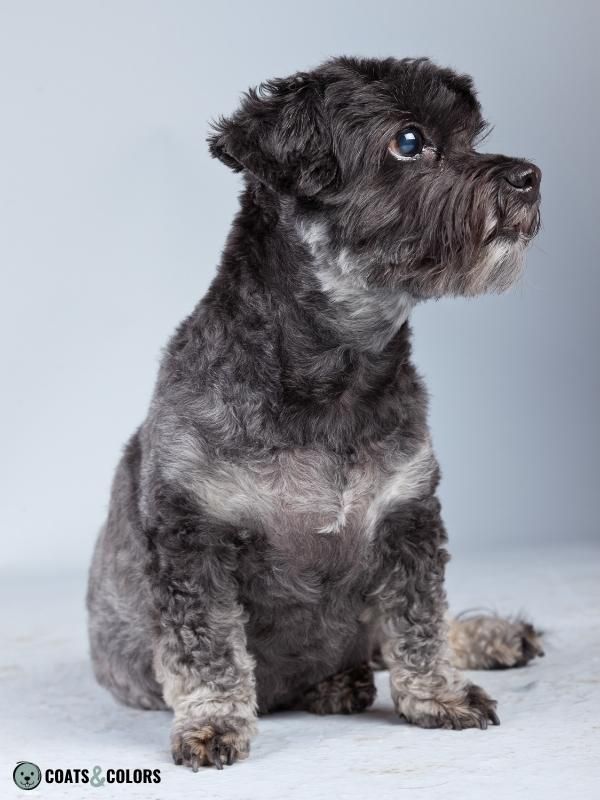
Black Back and Merle
Merle deletes some eumelanin from the original base pattern, it rarely affects phaeomelanin. In most dogs, only the black coat in the black & tan pattern will be affected by merle.
Many breeds with black-and-tan or tricolor and merle can be found in the herding group, e.g. in Australian Shepherds, Border Collies, Shelties, or Collies.
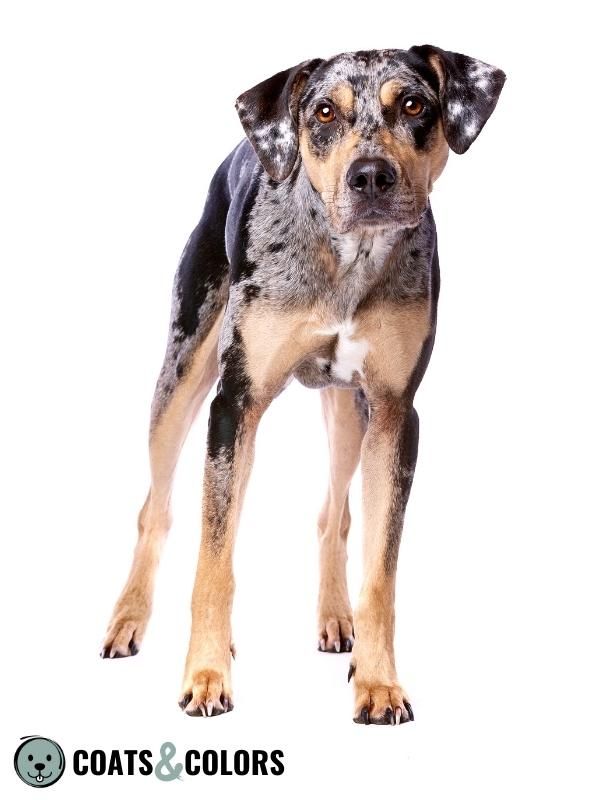
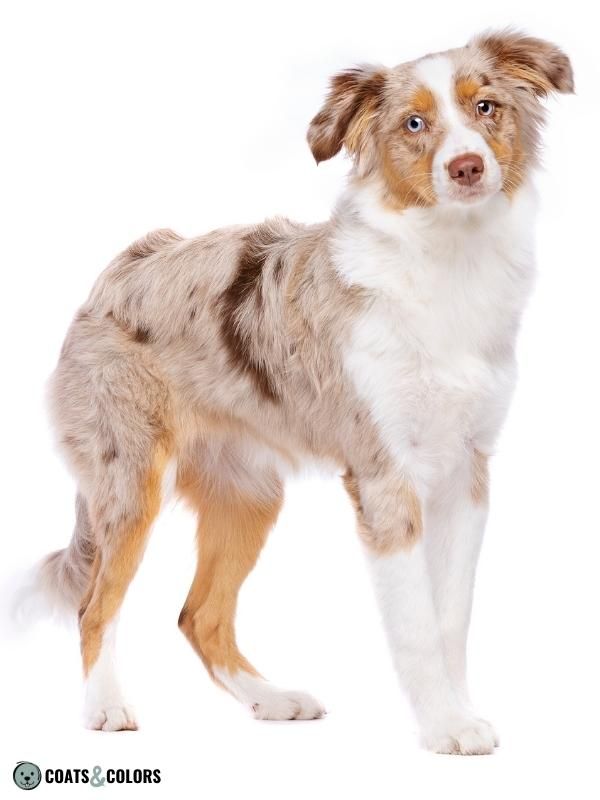
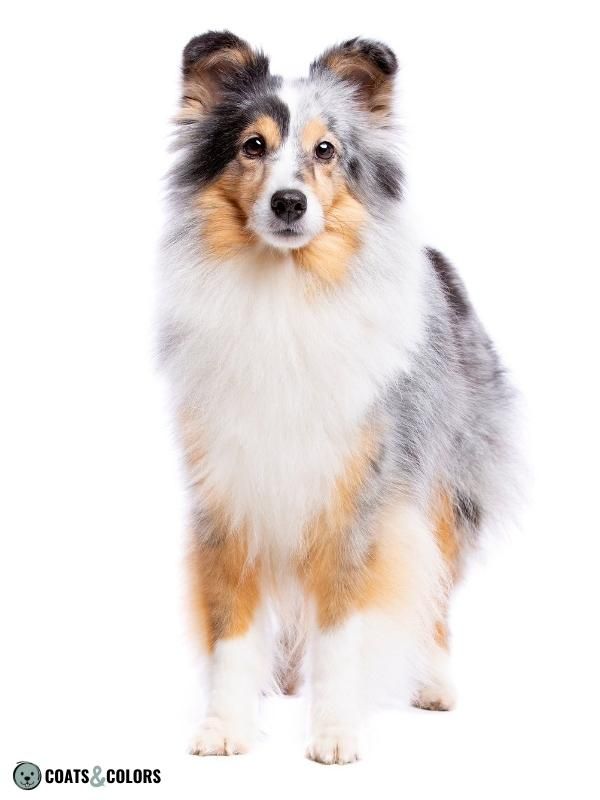
Tan Point Domino
Domino inhibits eumelanin production. The eumelanin coat recedes, which creates larger areas with phaeomelanin. The tan points and undercoat can be lighter than expected.
Tan point dominos typically have extended tan markings from birth. Their black mantle can look grayish from having pale hair roots and a light undercoat. They often have a residual nose bar, black ear rims, and a widow’s peak (resembling a shaded sable pattern). Some dogs lose more eumelanin than others.

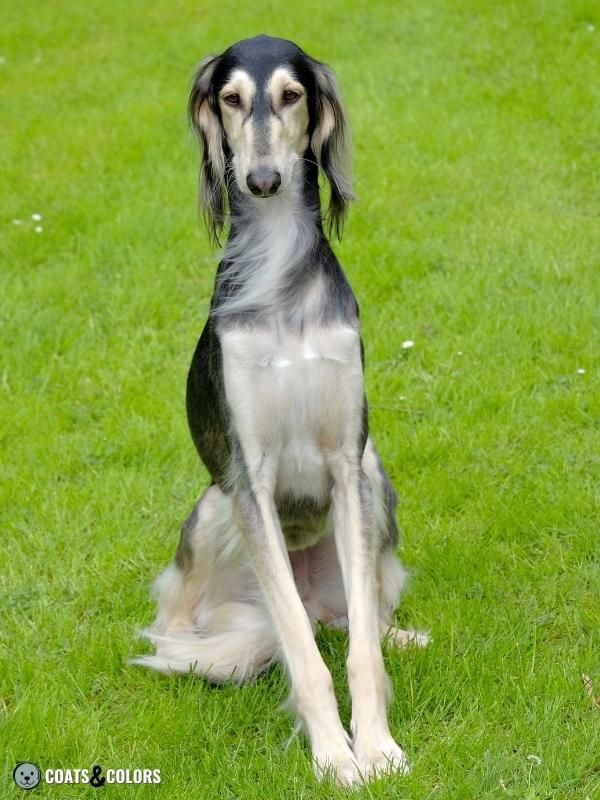
Domino is only found in a comparatively small number of dog breeds. There are different versions of domino around that all seem to work in a similar way:
Arctic domino affects Northern breeds, but also occurs in some hounds and a variety of other breeds. It is the reason behind the typical facial patterns of Siberian Huskies or Alaskan Malamute.
Grizzle domino occurs in sighthound breeds. And Cocker Sable is a rare breed-specific version only found in (you guessed it!) English Cocker Spaniels and American Cocker Spaniels.
Dog Breeds with Tan Points
Tan points give a very distinct look and are found in very many dog breeds. Here are some examples:
- Afghan Hound
- Australian Cattle Dog
- Australian Kelpie
- Australian Shepherd
- Basenji
- Bearded Collie (rare)
- Beauceron
- Bernese Mountain Dog
- Black and Tan Coonhound
- Border Collie
- Borzoi
- Bull Terrier
- Catahoula Leopard Dog
- Cavalier King Charles Spaniel
- Chinook
- Chihuahua
- Cocker Spaniel
- Collie
- Danish Swedish Farmdog
- Dachshund
- Dobermann
- English Setter
- English Springer Spaniel
- English Toy Terrier
- Eurasier
- Finnish Lapphund
- German Hunting Terrier
- German Shepherd Dog
- Grand Bleu de Gascogne
- Gordon Setter
- Hovawart
- Lancashire Heeler
- Lapponian Herder
- Manchester Terrier
- Miniature Pinscher
- Miniature Schnauzer
- Pomeranian
- Poodle
- Prague Ratter
- Rottweiler
- Saluki
- Russkiy Toy
- Sheltie
- Shiba
- Siberian Husky
- Tibetan Mastiff
- Tibetan Spaniel
- Tibetan Terrier
- Welsh Corgi
Learn More
Links
[1] Bannasch, D.L., Kaelin, C.B., Letko, A. et al. Dog colour patterns explained by modular promoters of ancient canid origin. Nat Ecol Evol 5, 1415–1423 (2021). https://doi.org/10.1038/s41559-021-01524-x
[2] Dreger DL, Schmutz SM. A SINE insertion causes the black-and-tan and saddle tan phenotypes in domestic dogs. J Hered. 2011 Sep-Oct;102 Suppl 1:S11-8. PMID: 21846741. https://doi.org/10.1093/jhered/esr042
Image Credits
© dpcrestock/yayimages.com
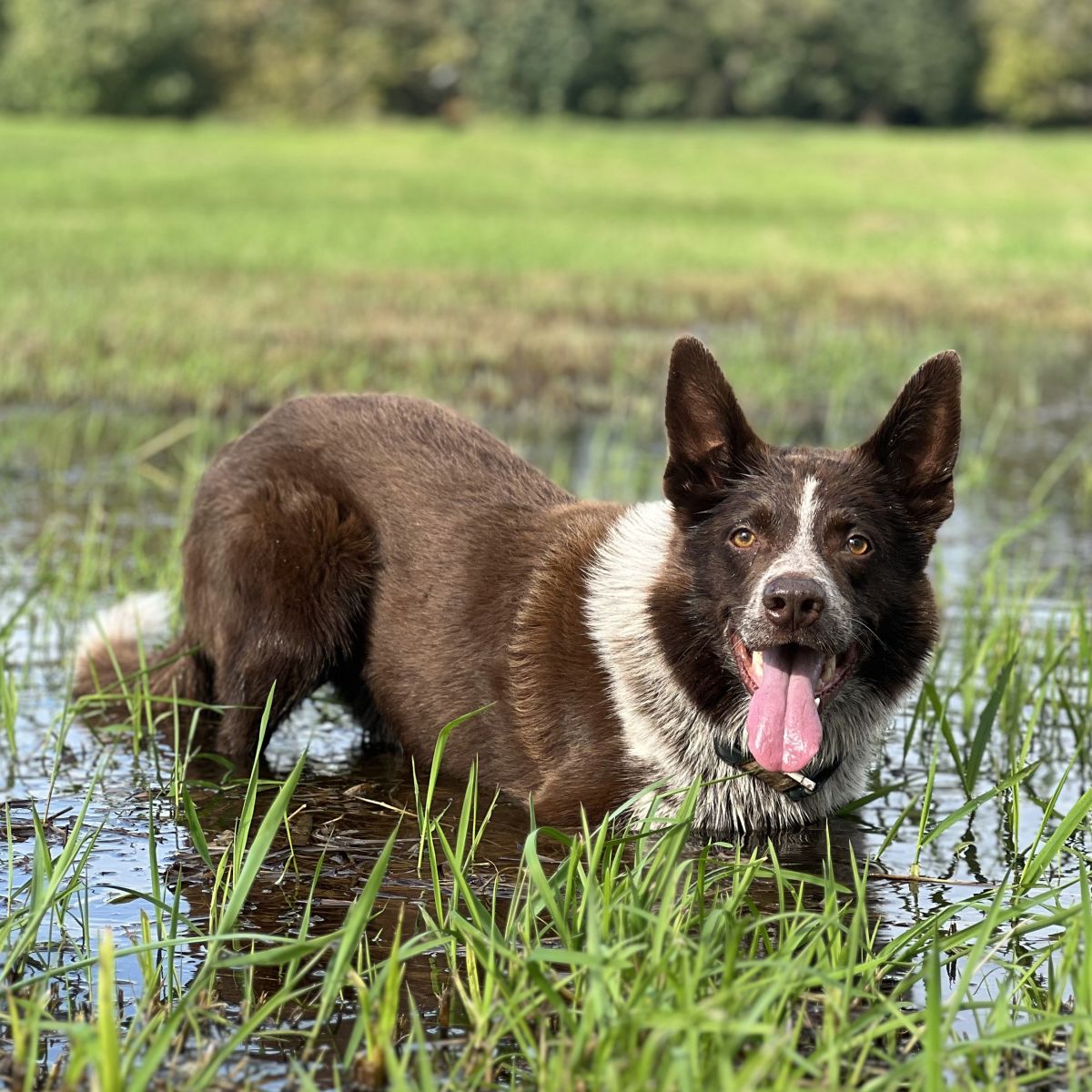
Hi! I’m Steffi. I am a biologist and a big time dog nerd. You are curious about coat color genetics? You’ve come to the right place! Read more.



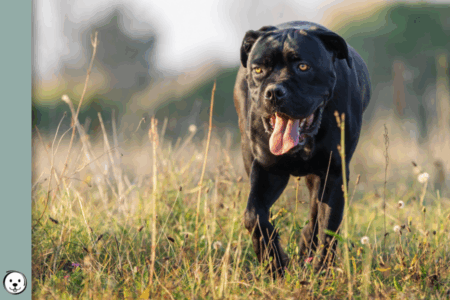

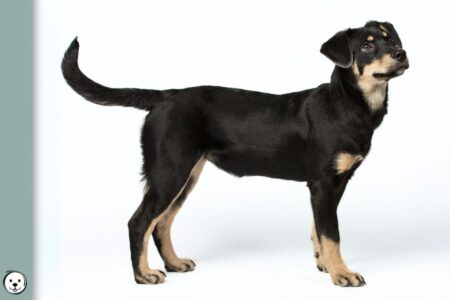


2 thoughts on “Tan Points (at)”
Comments are closed.